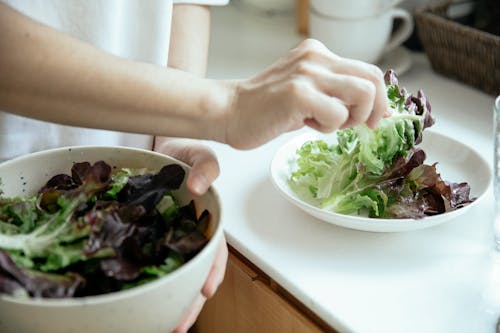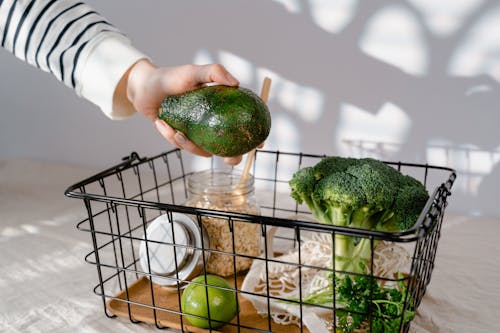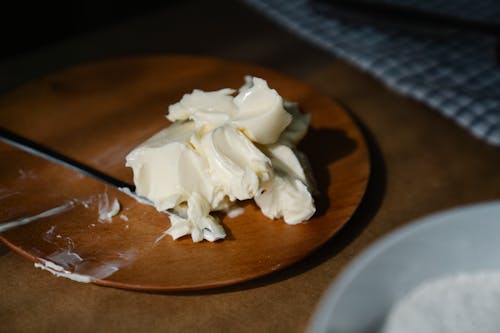7 rich source of iron is
Iron is an essential mineral that plays a crucial role in various bodily functions, including the production of hemoglobin, which carries oxygen in the blood. Despite its importance, many individuals struggle to consume adequate amounts of iron, leading to deficiency and associated health issues. Understanding the rich sources of iron, both from animal and plant origins, is vital for maintaining optimal health and preventing iron deficiency anemia. In this article, we will explore the different types of dietary iron, highlight iron-rich foods, examine factors affecting iron absorption, and discuss the health implications of iron deficiency. By the end, you will be equipped with the knowledge to incorporate iron-rich foods into your diet effectively.
# Rich Source of Iron
## Introduction to Iron and Its Importance
Welcome to the iron age—no, not the historical period but the essential mineral that plays a starring role in your health! Iron is not just another mineral; it’s like the unsung hero of the nutrient world. This vital element is a key player in transporting oxygen throughout your body, helping to produce energy, and supporting your immune system. In short, iron is the life of the party, and without it, you might find yourself feeling a bit dull—quite literally.
### The Role of Iron in the Body
Think of iron as the delivery driver of oxygen. It swoops in, gets the oxygen from your lungs, and delivers it to your cells, ensuring they have the energy to keep you bouncing around like a kid on a sugar high. Plus, it plays a crucial role in synthesizing hemoglobin, the protein in red blood cells that carries that oh-so-important oxygen. Low iron levels can lead to anemia, fatigue, and brain fog. So, keep your iron levels up, and you’ll be sharp as a tack!
### Daily Iron Requirements
Now, how much iron do you need to avoid feeling like a sloth? The answer varies depending on factors such as age, gender, and life stage. For most adult men, it’s around 8 mg per day, while women of childbearing age need about 18 mg to keep up with their monthly blood loss. Pregnant women should up their game to 27 mg. Remember, though, too much iron can also be a bad thing, so balance is key!
## Dietary Sources of Iron
### Overview of Iron-Rich Foods
"Where can I find this magical iron?" you ask. Well, fear not! There’s a whole buffet of iron-rich foods out there. Think red meat, poultry, seafood, lentils, beans, and leafy greens. Even snacks like pumpkin seeds can be iron-packed. With a little planning, you can feast your way to better health!
### The Importance of a Balanced Diet
While it’s tempting to chomp down on a steak every day in the name of iron, a balanced diet is the name of the game. Incorporating a variety of foods ensures you not only get enough iron but also other essential nutrients. So, sprinkle in some veggies, whole grains, and healthy fats alongside your iron-laden goodies for a well-rounded plate. Because let’s face it—nobody wants to be ‘that person’ who only eats one type of food.
## Types of Iron: Heme vs. Non-Heme
### Heme Iron: Sources and Benefits
There are two types of iron: heme and non-heme. Heme iron is like the VIP section in the iron world—it's more easily absorbed by your body. You’ll find this little luxury in animal products like red meat, poultry, and fish. So, if you want to boost your iron levels without a lot of fuss, heme iron is your golden ticket.
### Non-Heme Iron: Sources and Limitations
Non-heme iron, on the other hand, is found primarily in plant-based foods like beans, lentils, and fortified cereals. While it’s still a great option for boosting your iron intake, it’s not absorbed quite as efficiently as heme iron. But don’t throw in the towel just yet! Pairing non-heme sources with vitamin C-rich foods (hello, oranges and bell peppers) can significantly enhance absorption. Teamwork makes the dream work!
## Rich Sources of Iron: Animal-Based Foods
### Red Meat: Beef and Lamb
When it comes to iron-rich foods, red meat—especially beef and lamb—takes the crown. It’s like the heavyweight champion of the iron world. A juicy steak not only satisfies your cravings but also delivers a hefty dose of heme iron. Just make sure to enjoy it in moderation to keep your heart happy!
### Poultry: Chicken and Turkey
If red meat isn’t your thing, don’t fret! Poultry, especially dark meat from chicken and turkey, is a fantastic alternative. It’s tender, versatile, and packed with iron. Plus, you can whip up a delicious meal in no time, whether it’s a cozy roast or a grilled masterpiece.
### Seafood: Fish and Shellfish
Last but certainly not least, we have seafood. Fish and shellfish like oysters and clams are not only delectable but also supercharged with iron. They offer a unique flavor profile and can elevate any meal. So, whether you’re a sushi lover or a shellfish fanatic, adding seafood to your diet is a tasty way to up your iron intake!
In conclusion, enjoying a variety of these rich sources of iron will keep you feeling energized and fabulous! Remember, a well-rounded, balanced diet is key, so mix it up and enjoy every bite!# Rich Source of Iron Is
## Rich Sources of Iron: Plant-Based Foods
When thinking of iron sources, one might picture a juicy steak or perhaps a piece of liver looking back at you. But hold your horses; it’s not all about meat! Plant-based foods can be iron powerhouses too. Welcome to the green side, where legumes, nuts, seeds, and leafy greens are not just for rabbits!
### Legumes: Beans and Lentils
Let’s kick things off with legumes, the unsung heroes of the plant world! Beans, chickpeas, and lentils are not only packed with protein but also serve as fantastic sources of non-heme iron. A cup of cooked lentils can provide about 6.6 mg of iron — that’s almost a third of the daily recommended intake for adults! So, whether you’re tossing them in a chili or blending them into a hummus, these little gems are a delicious way to boost your iron levels.
### Nuts and Seeds
Next up, let’s get nutty! Nuts and seeds, like pumpkin seeds, almonds, and cashews, are nutritious snack champions. For example, just a quarter cup of pumpkin seeds can deliver around 7 mg of iron. Toss them on salads, throw them in your breakfast bowl, or just munch on them straight from the bag (no judgments here). They not only help with iron intake but also bring a crunch to your life!
### Leafy Greens and Vegetables
Now, let’s talk about leafy greens — the superhero of the plant kingdom. Spinach, kale, and swiss chard are not only versatile but also brimming with iron. A cooked cup of spinach can deliver about 6.4 mg of iron. Be sure to sauté or cook these greens a bit for better flavor and absorption. Add them to smoothies, omelets, or pasta dishes, and you’ve got yourself a well-rounded meal that would make Popeye proud!
---
## Factors Affecting Iron Absorption
So, you’ve loaded up on iron-rich foods—great! But wait, not all irons are created equal, and how we absorb this crucial mineral can depend on various factors.
### Vitamin C and Iron Absorption
Cue the vibrant citrus fruits! Vitamin C acts like a best bud to non-heme iron (the kind found in plant foods). Consuming vitamin C-rich foods like oranges, strawberries, or bell peppers alongside your iron sources can significantly enhance absorption. So, why not whip up a zesty salad with spinach and sliced strawberries? Your iron levels will thank you for the citrus boost!
### Inhibitors of Iron Absorption
Ah, the villains of iron absorption! Certain substances, like phytates found in grains and legumes, calcium, and polyphenols in tea and coffee, can inhibit how much iron you absorb. So, while it’s totally fine to enjoy that cup of tea, maybe don’t pair it with your iron-rich meal. That way, you can savor your food without the sneaky side effects!
---
## Health Implications of Iron Deficiency
Iron deficiency is like that unwanted guest who crashes your party but doesn’t even bring snacks. It's not just annoying; it can lead to various health issues if left unchecked.
### Symptoms of Iron Deficiency
Feeling fatigued, weak, or dizzy? Those might be signs of iron deficiency knocking at your door. Other symptoms can include pale skin, brittle nails, and shortness of breath during mundane tasks like climbing stairs. If you start feeling like a wilted flower, it might be time to check your iron levels.
### At-Risk Populations
Certain groups are more prone to iron deficiency, including pregnant women, vegetarians/vegans, and individuals with heavy menstrual cycles. Kids and teenagers are also at risk due to their rapid growth and increased iron needs. So, if you're in any of these categories, ensure you keep your iron levels in check—it’s just smart!
---
## Conclusion: Incorporating Iron-Rich Foods into Your Diet
Alright, let’s wrap this up in a shiny iron package! Incorporating iron-rich foods into your diet doesn’t have to be a chore. With a few simple tweaks, you can jazz up your meals while enhancing your health.
### Tips for Increasing Iron Intake
First off, get creative in the kitchen! Use beans in tacos, toss nuts into your yogurt, or sneak some spinach into your smoothies. Plan meals that combine non-heme iron sources with vitamin C-rich foods, and you’ll have a bonafide iron-boosting feast. And don't forget to look for fortified foods that can give you an extra leg-up on your iron journey.
### Balancing Iron with Other Nutrients
While iron is crucial, balance is key! Ensure you’re also getting enough vitamin B12, folic acid, and zinc in your diet to support overall health. It’s like building a solid house—if one part is weak, the whole structure is at risk. So, load up on a variety of foods, keep it colorful, and you’ll be well on your way to staying iron-strong!
There you have it! Iron doesn’t have to be a mystery. With a little knowledge and creativity, you can make sure you’re meeting your iron needs and feeling your best. Happy munching!In conclusion, ensuring adequate iron intake is essential for overall health and well-being. Whether you prefer animal-based or plant-based sources, there are plenty of delicious and nutritious options available to help you meet your iron needs. By being mindful of the factors that influence iron absorption and incorporating a variety of iron-rich foods into your diet, you can effectively support your body’s needs. Remember, if you have concerns about your iron levels or dietary choices, it’s always a good idea to consult with a healthcare professional for personalized advice. Prioritizing your iron intake is a step towards a healthier, more energetic life.
Frequently Asked Questions (FAQ)
1. How can I tell if I have an iron deficiency?
Signs of iron deficiency can include fatigue, weakness, pale skin, shortness of breath, and dizziness. If you suspect you may be deficient, it's important to consult a healthcare professional for a proper evaluation and blood tests.
2. Can I get enough iron from a vegetarian or vegan diet?
Yes, it is possible to obtain sufficient iron from a vegetarian or vegan diet by including a variety of plant-based sources, such as legumes, nuts, seeds, and leafy greens. Combining these foods with vitamin C-rich items can enhance iron absorption.
3. What are some foods that inhibit iron absorption?
Certain foods and beverages can hinder iron absorption, including those high in calcium (dairy products), polyphenols (found in tea and coffee), and phytates (present in whole grains and legumes). It's best to consume these items at different times than iron-rich meals.
4. How much iron do I need daily?
Daily iron requirements vary by age, sex, and life stage. Adult men typically need about 8 mg per day, while women aged 19-50 require approximately 18 mg due to menstrual losses. Pregnant women need even more, around 27 mg. Always consider individual dietary needs and consult a healthcare provider for personalized recommendations.



Comments
Post a Comment